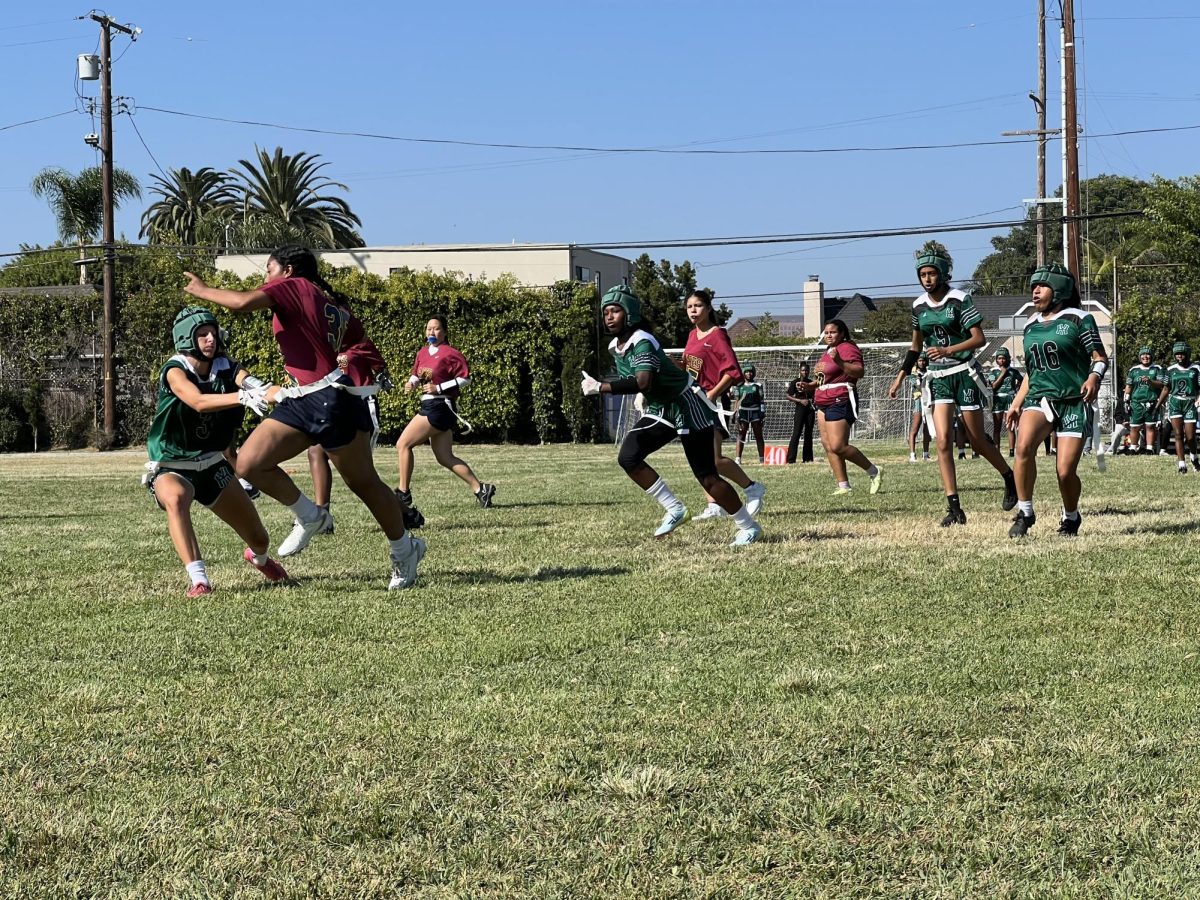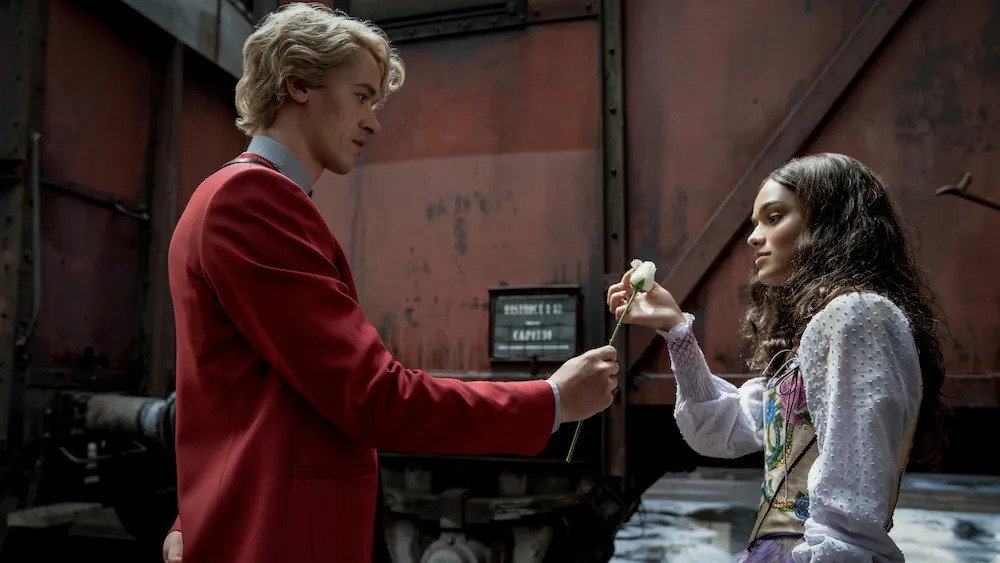**contains spoilers**
“The Ballad of Songbirds and Snakes” is the prequel to “The Hunger Games” franchise that introduced Katniss Everdeen and spurred a YA-dystopian trend. Released November 17, 2023, the film is based on the 2020 novel of the same title by Suzanne Collins. It’s set 64 years prior to the first film and 10 years post-war (Dark Days) in Panem. Panem is a post-apocalyptic North America, consisting of the Capitol city where the most high-powered and opulent citizens live, and the other 13 districts living under the Capitol’s full control. Following the story of future Panem president Coriolanus Snow, “The Ballad of Songbirds and Snakes” provides sensational imagery, weighty parallels, personal scenes, and a close following to the novel, with the exception of a divergence from the protagonist’s presentation.
Coriolanus Snow, portrayed by Tom Blyth, is an Academy student of the Capitol assigned to mentor Lucy Gray Baird from District 12, portrayed by Rachel Zegler. He is tasked to guide her through the barbarous annual Hunger Games as her mentor. The imagery of the opening scene pulls viewers into the story, with younger Coriolanus and his older cousin, Tigris, fighting a rabid dog in the desolation of their home area, then hiding amongst discovering a starving Capitol man on the deserted streets, preparing to ingest the human remains deriving of a deceased on the floor. This scene aids in proving the seemingly recurring theme in the film series, that the world is their Hunger Games, inside or out of the arena.
The “Hunger Games” series shows throughout that there are no true “winners” to the Games, only survivors. The suffering of each survivor never ends with the Games, as they are put through the misery of handing pre-written speeches to the families of the fallen tributes, and their families and themselves are in constant danger if they do not abide by Coriolanus’ commands. All the District people were perennially fighting to survive before the rebellion, and “The Ballad of Songbirds and Snakes” reveals that even the most distinguished citizens of the Capitol post-Dark Days are clandestinely struggling to keep afloat as well.
“The Ballad of Songbirds and Snakes” carries astonishing parallels throughout the film connecting to the rest of the franchise. Lucy Gray Baird and Katniss Everdeen are both powerful female Hunger Games victors of District 12. Although their personalities are, granted, at variance, similitude can be found between the two, making it evident where much of Coriolanus’ future hatred for Katniss stems from. One of the parallels between the two is the revelation that Lucy Gray wrote “The Hanging Tree,” a ballad Katniss sings in “Mockingjay – Part One,” repeated by the rest of the rebels as an anthem of solidarity in the Districts; Coriolanus Snow is sung back the words of his former lover in rebellion, carrying extra weight on the meaningfulness of the scene. It is also revealed that Coriolanus’ father, military leader Crassus Xanthos Snow, was killed in action in District 12, all the more reason for Coriolanus to despise the District.
The actors and the production team did a phenomenal job at ensuring each scene was abundantly intimate, allowing the audience to feel as if they were beside the onscreen characters themselves. During the scene of the rebels’ bomb attack on the arena, viewers can almost feel the chaos, horror, and disquietude of the scene as if they were there. Rachel Zegler clearly captures the feeling of the distressing adrenaline rush when Lucy Gray was hiding from the rest of the tributes, or competitors, during the Games. The closing scene where Coriolanus stares off at the statues of Panem perfectly encapsulates feelings of anticipation of the vicious transformation of the totalitarian dictatorship soon to be led by Coriolanus himself.
The humanization of the characters in the Games was meticulously well-done. After gaping at tributes hunting down one another for a lengthy period, it’s difficult to remember that despite the bloodbath, they are only human. The outrage of Sejanus after watching his, not only tribute, but former classmate, get murdered during the games. His rebellious act of sneaking into the arena to perform the infamous District 2 tradition of the bread crumbs. Lucy Gray comforting her District friend, Jessup in his final moments before passing. Reaper gathering the corpses of the deceased tributes and burying them under the Capitol flag mid-game. All reminders that the true enemy was the Capitol, not the other tributes in the arena, as they were all victims of the games.
Although the film portrays the events in the novel well, the perception and presentation of Coriolanus Snow are disparate between the two mediums. Coriolanus’ internal dialogue in the novel presents him as nearly apathetic in terms of the outcomes of his actions toward others, only interested in ensuring his family’s status, discarding relationships for his own benefit without a second thought. The purpose of the novel was to unveil the beginning stages of his journey to become Panem’s leader, leading to the emotionless portrayal of Coriolanus. However, the film almost paints him as a young boy pushed to become the villain at the end, causing some audiences who have not read the book alongside watching the film to impress Coriolanus as a character who changed his ways only at the film’s closing. Other than his portrayal, the film followed the novel exceptionally closely, and most definitely did not disappoint.
SNOW: It’s the things we love most, that destroy us.



















